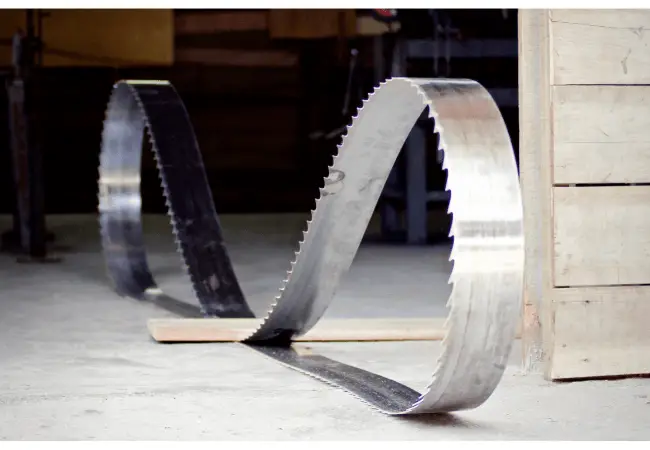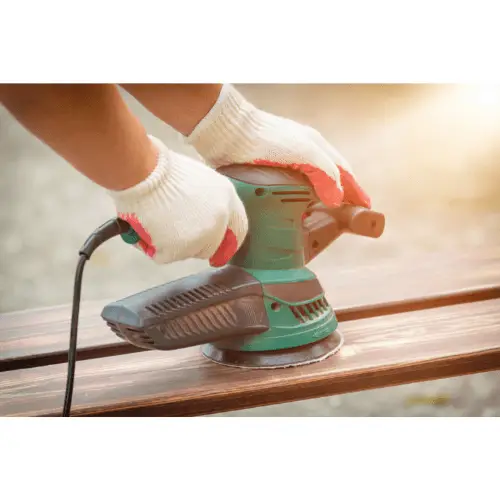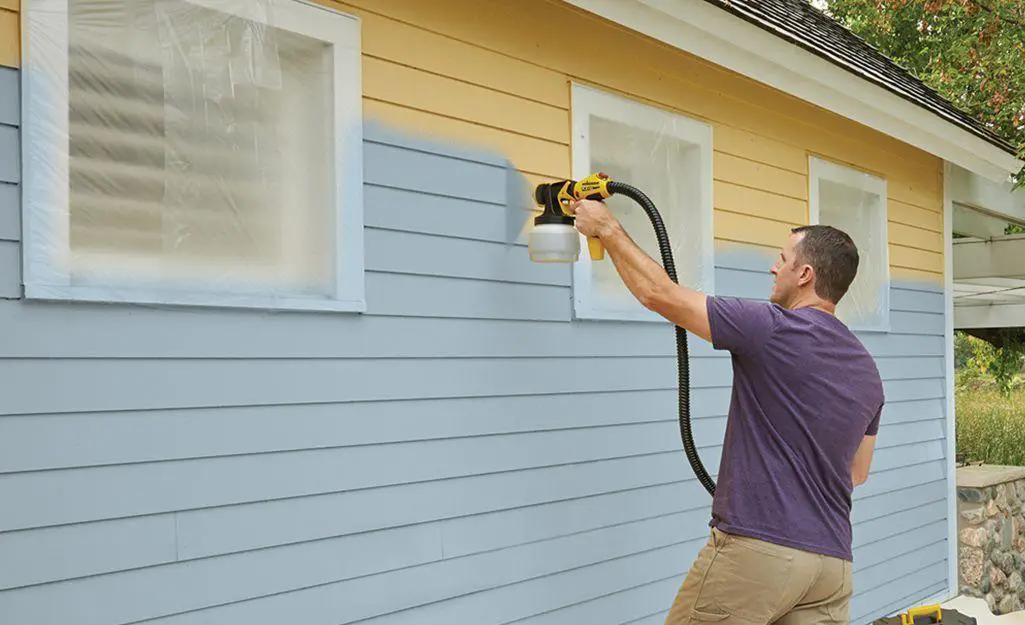
If you’ve been working with saws for a while, you’ll know that band saws have some of the largest blades among all of them. Therefore, they are the most difficult to take care of. You have to take extra precautions when storing them and when you’re cleaning them. Discover a very simple and effective method on how to fold a band saw blade.
You need to know how to fold a band saw blade to do either. The process can seem a little complicated at first, but it is pretty simple once you get used to it. This guide will explain the entire three-step process.
Contents
The Process
Remember to get a pair of gloves before you start; this is a necessary safety precaution that will keep you safe. The band saw blades are designed to cut through the wood so they won’t have any trouble penetrating the skin.
Gloves are a layer of safety between the blade and your hand. Depending on the type of gloves you wear, your hands will get a different degree of protection. Thicker gloves are a better option.
With that out of the way, let’s get into the first step of the process.
Step 1: Position The Blade
Use one hand to hold the blade in front of you. Preferably, use your dominant hand. So if you’re right-handed, hold the blade with your right hand. But if you’re left-handed, hold it with your left hand.
Make sure the blade’s teeth point in the opposite direction to you. This is where the gloves become super important. The comparative is holding the teeth with naked hands vs. protected hands. The latter is safer and better.
Once you’ve positioned the blade, it’ll look like a loop in front of you. Half of the blade will be on the ground, while the other half will be in the air.
Step 2: Position Your Foot
The next step is positioning your foot inside the loop. In our experience, we’ve found that pushing down on the blade and the floor is super helpful in securing the blade. Doing so makes sure the blade doesn’t move an inch while you’re working on it.
Step 3: Press And Twist The Blade
The last step is a little complicated. But do it properly once, and you’ll be able to replicate it whenever you want with little to no trouble. You have to push your hand down and twist it simultaneously.
This is why it’s essential to use your dominant hand in the first step. That hand has the most power and control; therefore, it is most suited to do this step.
As you lower your hand and twist the coil, you’ll notice that it is coiling. By the time you’ve twisted the coil in one complete circle, i.e., 360 degrees, the blade will form three coils; this means that the one big loop from the first step will create three smaller loops.
And that’s it; you’ve folded your band saw blade.
Frequently Asked Questions About Folding Band Saw Blades
Can I break my blades by folding them?
No, it is improbable that you will break your blades by folding them. Every carpenter and crafter with a band saw folds their tools’ blades because that makes it easier to store them. Nobody has infinite space, and folding is one of the best ways to decrease the space required to store tools.
Manufacturers consider this when making the blades and ensure their products are flexible and robust. And as long as you have these two features, folding isn’t an issue.
Check it before folding if you’re still worried about breaking your blade. Make sure there isn’t any rust or damage. These are two instances under which it is possible that your blades might break.
As long as these aren’t present, you won’t have any issues when folding your band saw blades.
How do I make sure I don’t hurt myself when folding a sharp blade?
It’s very safe to fold a band saw blade; this is evident because every artisan does it. If it weren’t safe, so many people wouldn’t fold their blades. Accidents are infrequent.
Even so, they are possible. The blade is quite sharp, and you could be in a horrible accident if you’re careless around it. To prevent accidents, you should wear thick, cut-resistant gloves. Also, make sure you aren’t holding the teeth of the blade.
Band Saws Vs. Scroll Saws
Now that you know how to fold and store a band saw, your toolbox will have more space. Have you thought about how you’ll fill it up? We’d recommend looking into scroll saws. While these may look a lot like band saws to amateurs, any professional craftsman will tell you otherwise.
There are some critical differences between the two, and you may benefit from purchasing a band saw. Let’s take a look at all the different ways scroll saws uniquely contribute to a craftsman’s toolbox.
Intricate Designing
Scroll saw blades move in an oscillatory motion; this means that they move back and forth, which allows for a smooth and professional finish. So if you get a scroll saw, you can make patterns and jigsaw puzzles.
Curves
Scroll saws are great at cutting curves. A significant drawback of using band saws is that they can only cut straight lines despite their strength and ability to cut through thick pieces of plywood.
Trying to cut neat curves with the band saw blades only ends badly. However, it’s super easy to do so with scroll saws. So if that’s something you’re interested in doing and including in your crafts, we’d recommend getting a scroll saw.
Wrap Up
In conclusion, folding a band saw blade is a simple three-step process. Hold the blade, keep it in place with your foot, and push and twist it simultaneously. The blade will coil into smaller loops, and you can store it away easily.
During this process, it is super important to keep your hands safe. To do so, wear gloves and avoid grabbing the blade’s teeth. Unless your blade is rusting or damaged, folding it will not harm it. However, if either of these conditions holds, you shouldn’t fold your blade, or it might break.
Using a rusting or damaged blade isn’t a good idea anyway, so you should consider replacing it in any case.
Once you start folding your band saw’s blade before storing it, you’ll realize you’re saving up on a lot of space. You can leave this new space empty or utilize it strategically by getting a new tool. Scroll saws are a great new addition.
They have distinct features that band saws don’t and can add to your crafting experience. These include their ability to cut intricate designs like inner circles neatly. Also, scroll saws can cut curves, which isn’t an option with band saws.
You can try to cut curves with them, but they won’t be neat at all. Hence, getting a scroll saw can uniquely add to your toolbox. So we’d recommend investing in one if you’re interested in using the space you’ve emptied.
Related Article



Leave a Reply